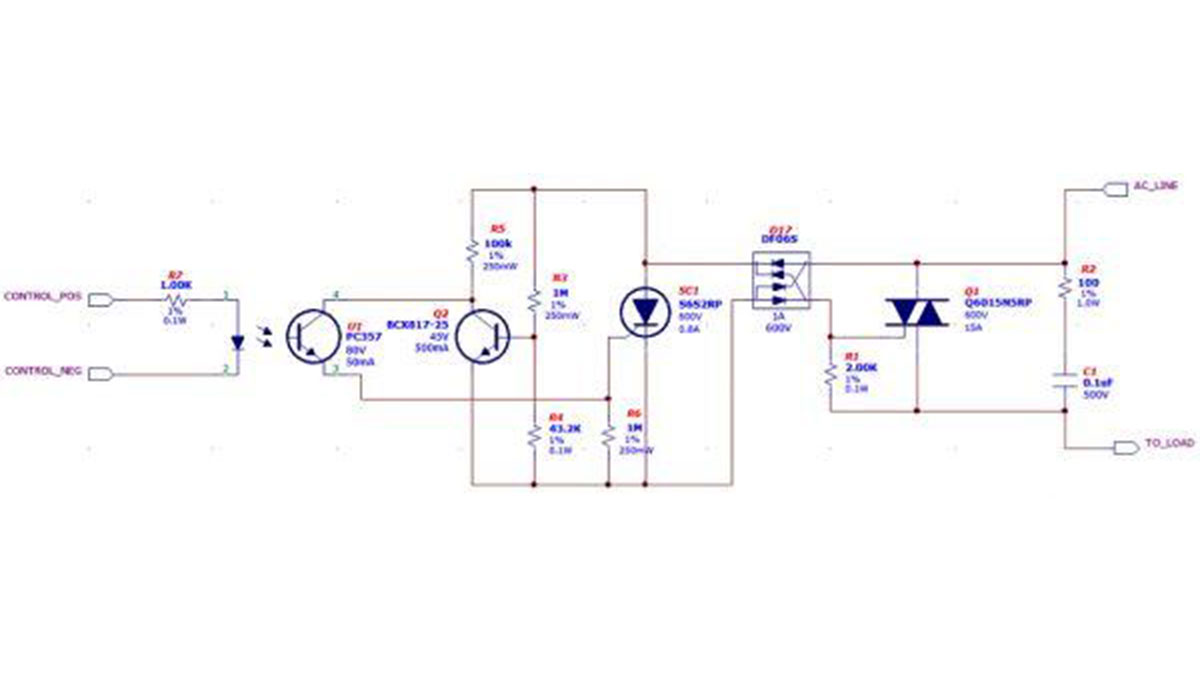This Design Idea is a solid state relay (SSR) which uses a triac to switch AC loads at high current. There are plenty of simple SSR circuits available, but this may be the simplest circuit that achieves turn-on and turn-off only when the AC line voltage is near zero.

Figure 1
AC SSR schematic with zero-cross switching (use browser zoom or open in another tab to enlarge)
Transistor Q2 acts as a clamp to disable the SCR gate drive voltage when the AC line is above about 15V. When the line voltage is below that value,
A positive current into the optocoupler’s LED allows current to flow from the rectified AC line to the SCR gate, turning it on. Once the SCR is turned on, enough current flows through the bridge rectifier to turn on the triac.
The circuit displays similar behavior when the optocoupler is turned off: the SCR will continue to conduct for the duration of the half-cycle, but with the optocoupler turned off, the SCR will not conduct once the AC voltage begins to increase on the next half-cycle.
Figure 2 is a scope shot showing the control voltage on the LED side of the optocoupler, and the switched AC output.
Figure 2 The AC turns ON or OFF only near the zero crossings.
- Low-component-count zero-crossing detector is low power
- A circuit for mains synchronization has two separate outputs for each half-period
- Two transistors form high-precision, AC mains ZCD
For more detail: Simple SSR has zero-cross on/off switching
